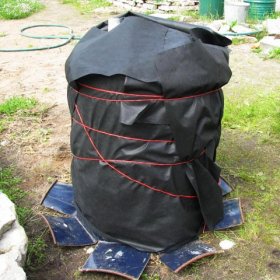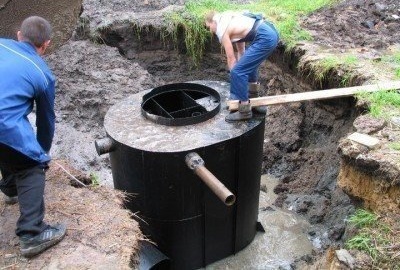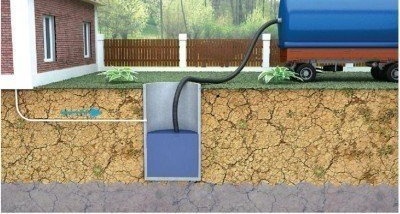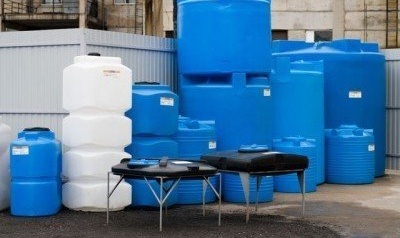Barrel pit: rules for location + construction instructions

The benefits of civilization today led to the fact that the owners of private houses are forced to rethink their views on the construction of autonomous sewers. If earlier the most profitable option for a cesspool was wells without a bottom, which could not be pumped out, then in the current conditions this installation can be forgotten. It is unlikely that there will be owners who use less than one cubic meter of water per day (this is the maximum volume of sewage under SNIP for septic tanks without a bottom), which means that it is necessary to consider how to make the sewage tight. The simplest option is a cesspool from a barrel.
What is such a system?
The entire sewer consists of:
- pipe systems in the house through which sewage is discharged;
- airtight barrels in which runoff accumulates.
When the tank is full - they call the machine-scavenger and with the help of it pump out the contents of the cesspool.
What points should be considered during construction?
- The location of the barrel according to SNIP should be removed from the house by at least 5 m, from the fence - by at least 2 m.
- The depth of the pit under the tank should not exceed three meters, because the hose of the machine-cesspool is seven-meter. Four meters will be on the surface and only three will sink into the barrel. A deeper placement will result in the sewer being able to pump out only the upper part of the drains, because the hose simply will not reach the bottom.
- Before immersing the barrel in the pit, you need to deploy it so that the hatch turns out next to the track or the entrance to the site. In a word, to provide the cesspool machine with free access to the hatch.
If the hatch closes the barrel too tightly, a ventilation pipe with Ø100 mm must be provided. They take it out about half a meter above ground level. This precaution is necessary for the removal of methane, which appears during the decomposition of sewage. Under conditions of complete tightness, the gas may explode.

When mounting, place the barrel with a slight slope towards the hatch so that it is easier to pump out sewage
- It is better to pick up a barrel designed for a large volume of wastewater. Lightweight containers run the risk of being pushed out by the ground, especially heaving. This trouble can only be avoided by placing the barrel on a hard surface (concrete pad) and carefully securing it.
Where to find a suitable barrel?
The easiest option is to buy finished plastic.
It already contains all the necessary elements for a septic tank: a hatch, a ventilation hole, etc. In addition, plastic is not susceptible to decay or corrosion. If the water consumption is too high, it is recommended to install several barrels, connecting them together.
If the funds do not allow you to "fork out" for the finished container, then you can get by with a metal barrel of 200 liters. But be prepared that in the conditions of biological reactions, iron will quickly fail, and you will have to look for a new tank. In addition, with the active use of water, such a pit fills up instantly, and at least once a week it will have to be pumped out.
The best option would be to find a finished tank from a decommissioned vehicle. As a rule, barrels that were used on the railway or in automobiles for transporting chemical liquids, gasoline, etc., have a wall thickness of 16 mm.
Such a cesspool can survive several generations of its owners.
Construction stages
- Dig a hole, the shape of which coincides with the shape of the container, and the size of the walls is 10-20 cm larger.
- Tamp the bottom and fill it with a 20 cm layer of sand.
- Shed sand and tamp.
- If the soil is prone to heaving, pour in a concrete pad.
- Lower the barrel so that the inlet pipe coincides with the location of the sewer pipe.
- Fill the gaps between the pit and the walls of the barrel with sand (not earth!), Ramming each layer.
- If the container is made of plastic, then, in order to avoid pressing the walls inward, it is better to first fill the barrel with water, and then fill it with sand.
- Connect the sewer pipe and the inlet pipe from the barrel with a two-way coupling.
- Cover the top of the cesspool with earth, leaving only the ventilation pipe and hatch.
It is more difficult to make a cesspool of several barrels, but in the end it will be more economical, since it does not require frequent pumping.





2 comments